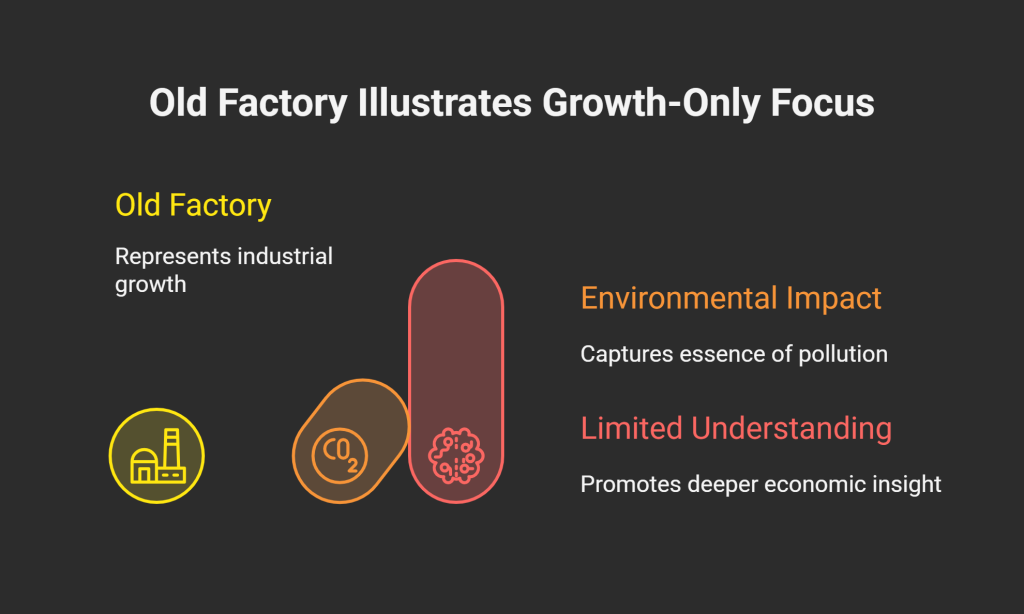Traditional Notion of Economic Development
Introduction
In the past, economic development was understood in a very narrow way. The focus was only on income and growth of production. The assumption was:
“Higher income = More development.”
But is this always true? Let’s explore how the traditional view looked at development and why it later changed.
Features of the Traditional Notion of Development
The traditional notion of development focused mainly on economic indicators like national income, per capita income, and material growth. Development was often equated with more production and higher income levels. Based on these measures, countries were compared and categorized as developed or developing, without considering other aspects such as health, education, equality, or sustainability.
1. Focus on National Income
In the traditional view, development was primarily equated with an increase in a nation’s Gross Domestic Product (GDP) or Gross National Product (GNP). The prevailing belief was that a higher national income was the most significant indicator of progress and overall well-being of a country. This perspective largely overlooked other crucial aspects of societal advancement, such as social equity, environmental sustainability, and cultural preservation. The central idea was that economic growth, as measured by GDP or GNP, would automatically lead to improvements in other areas.
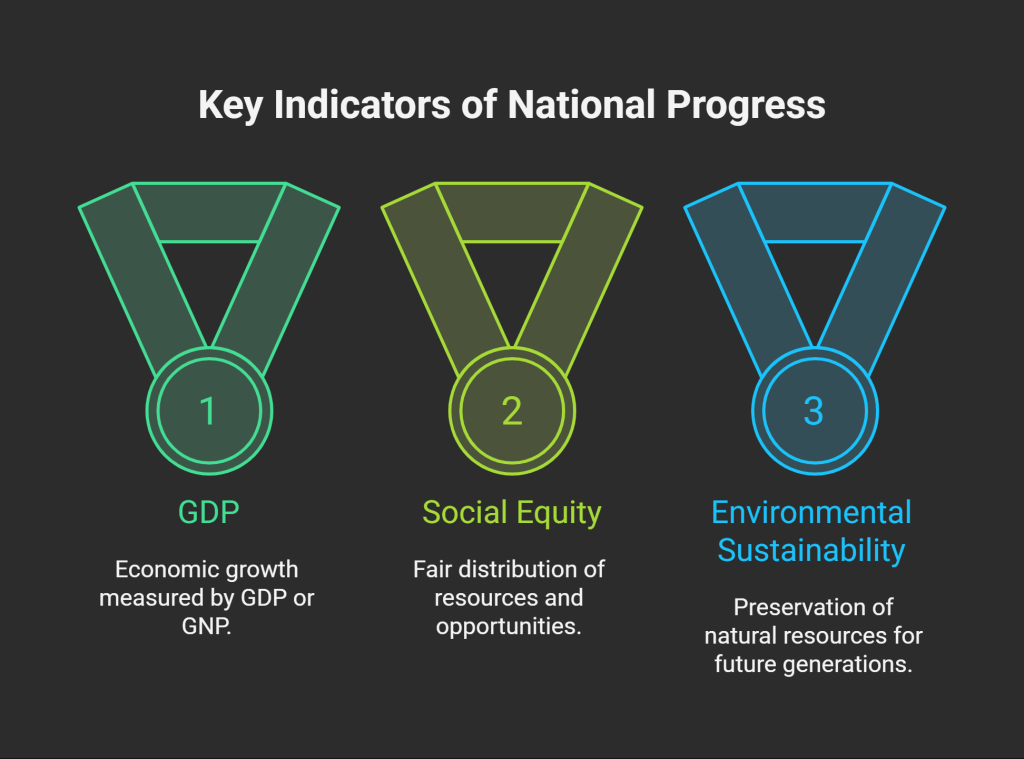
2. Per Capita Income (PCI)
Economists and policymakers often used Per Capita Income (PCI) as a key metric to assess the level of development in a country. PCI represents the average income per person in a nation and is calculated using the following formula:
Per Capita Income = National Income / Total Population
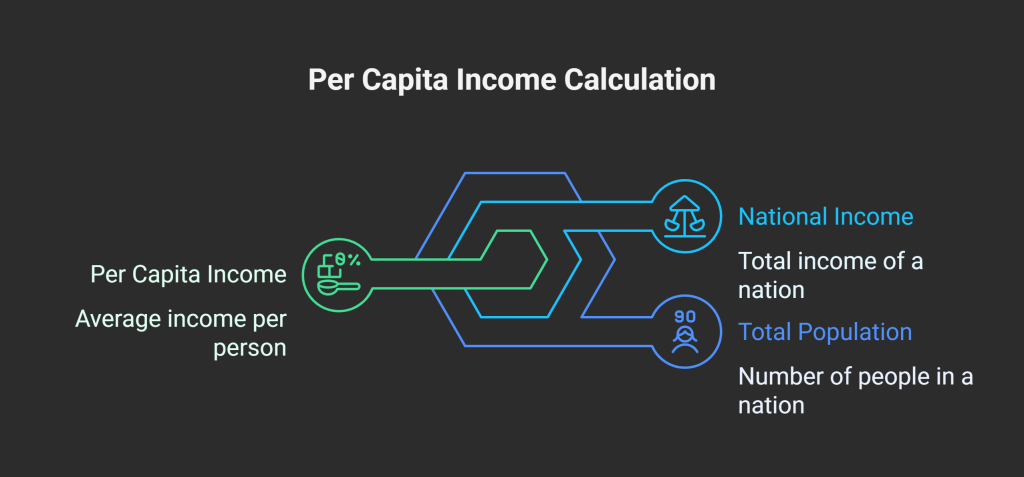
Countries with higher PCI were typically classified as “more developed,” while those with lower PCI were considered “less developed” or “developing.” This approach provided a seemingly straightforward way to compare the economic performance of different nations. However, it also had significant limitations, as it failed to account for income inequality, variations in the cost of living, and non-monetary aspects of well-being.
3. Materialistic Approach
The traditional notion of development adopted a predominantly materialistic approach, emphasizing the importance of increased production, industrialization, and the accumulation of wealth. The focus was on building more factories, expanding industries, and boosting overall output. This perspective often disregarded the social and environmental consequences of economic activities.
For example, rapid industrial growth might lead to environmental degradation, displacement of communities, and increased social inequality. However, these negative impacts were often overlooked or downplayed in the pursuit of higher GDP and PCI. The materialistic approach also tended to prioritize economic efficiency over social justice and environmental sustainability.
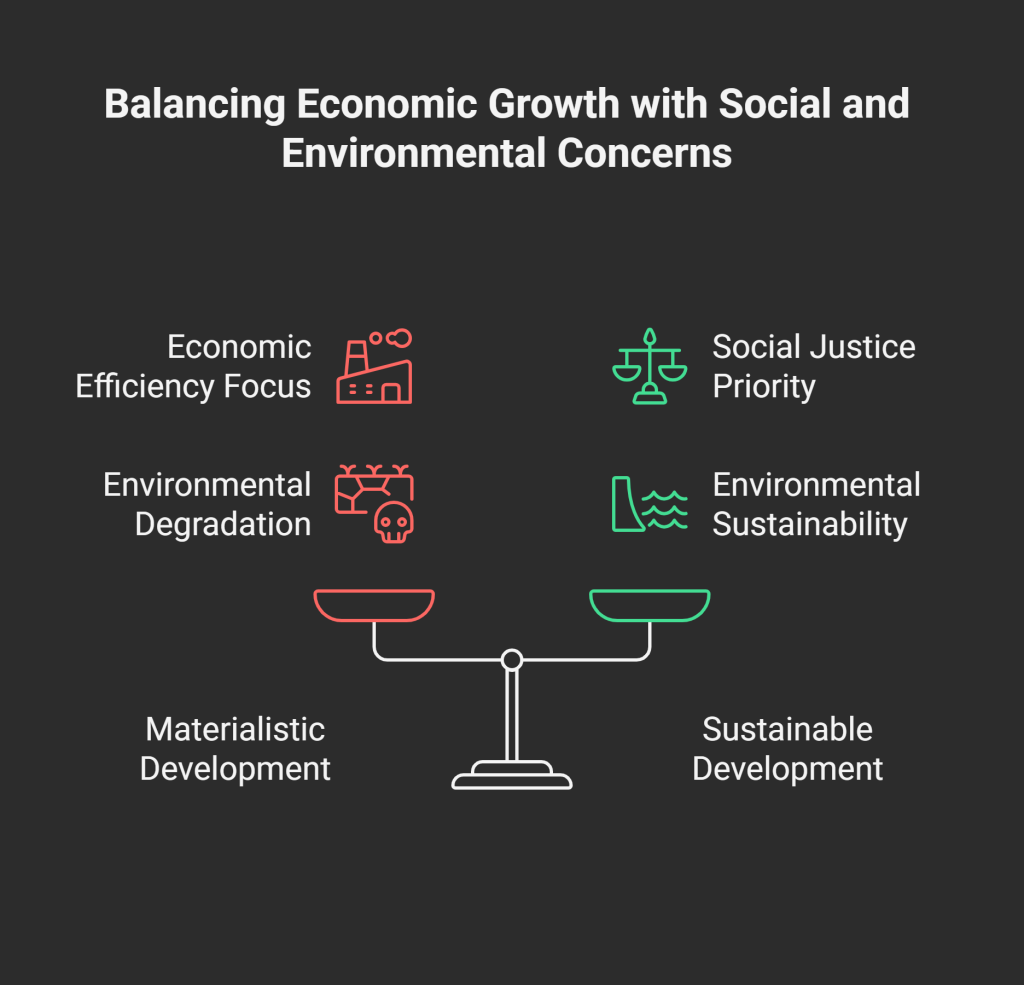
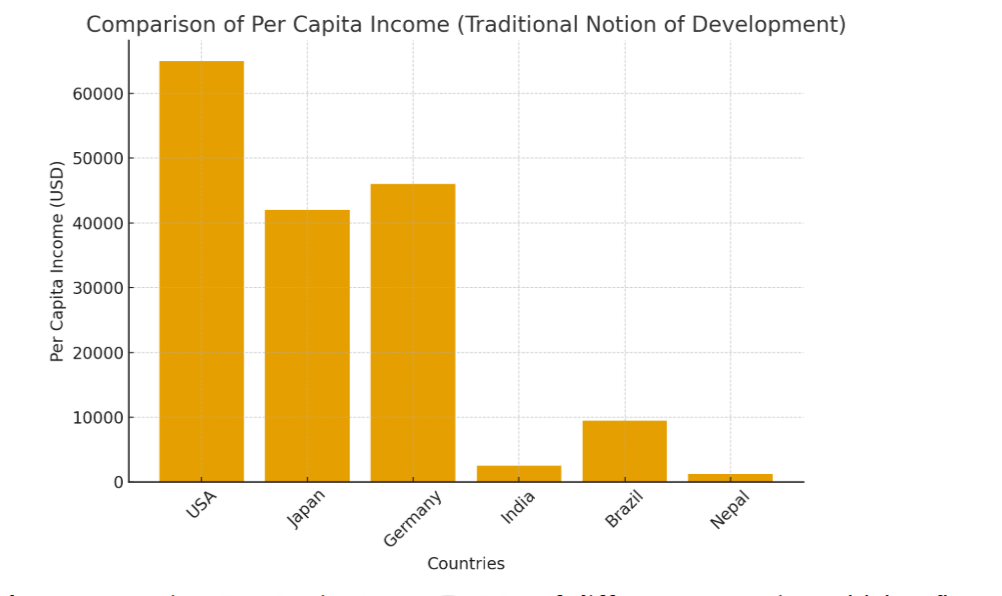
4. Country Comparison
International organizations like the World Bank and other global agencies played a significant role in shaping the traditional notion of development through their country comparison methodologies. These organizations primarily used per capita income as the main criterion for classifying countries into different development categories.
For instance, countries with high PCI, such as the United States and Japan, were typically labeled as “developed” or “high-income” nations. On the other hand, countries with low PCI, such as India, Nepal, and Bangladesh, were categorized as “developing” or “low-income” nations. This classification system had important implications for aid allocation, investment decisions, and international relations.
However, it also reinforced a narrow and often misleading view of development, as it failed to capture the complex realities of social, environmental, and cultural progress. The traditional approach to country comparison often perpetuated a hierarchy in which economic indicators were prioritized over other dimensions of human well-being.
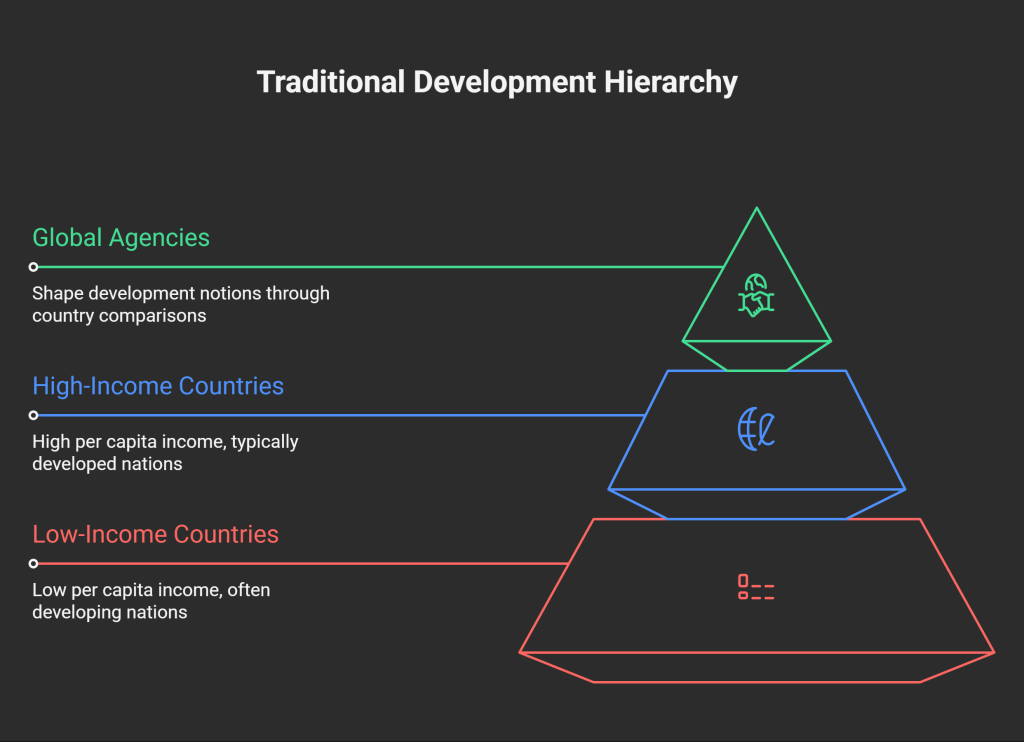
Limitations of the Traditional Approach
Ignores Inequality
- Only averages are considered, not how income is distributed.
- A country may have high PCI, but the majority might still be poor.
Neglects Non-Material Aspects
- Education, health, freedom, gender equality, and security were not considered important.
- A rich person in poor health cannot be truly developed.
No Consideration of Sustainability
- Focus only on growth, ignoring environment, future resources, or long-term well-being.
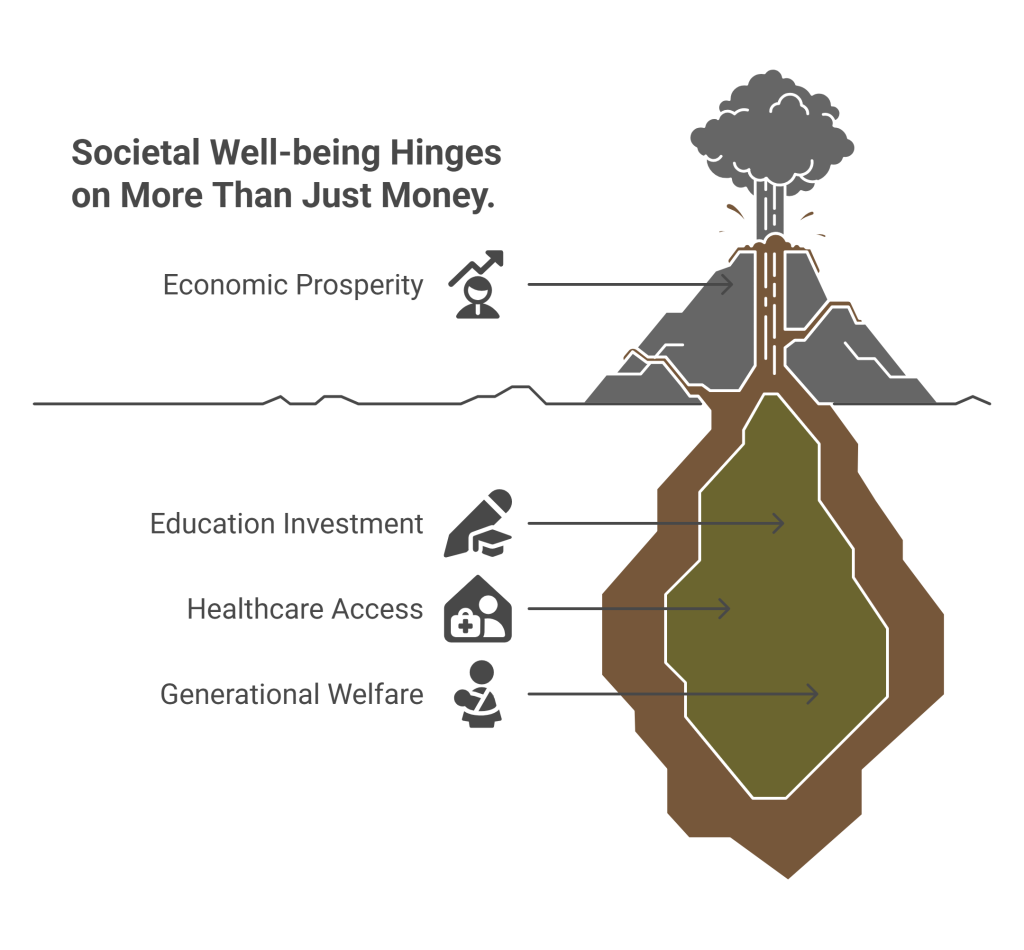
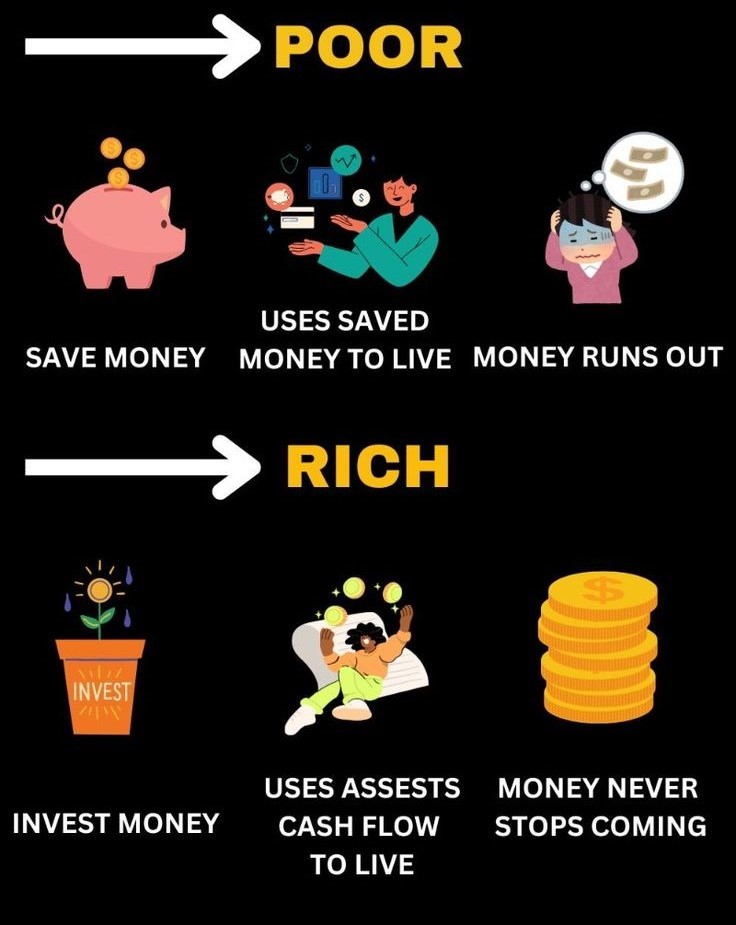
Example to Understand
Suppose Country A has a per capita income of $20,000, but:
- 80% of the wealth is in the hands of 10% people.
- Health and education services are poor.
Country B has per capita income of $8,000 but:
- Better schooling, healthcare, equality, and job opportunities.
